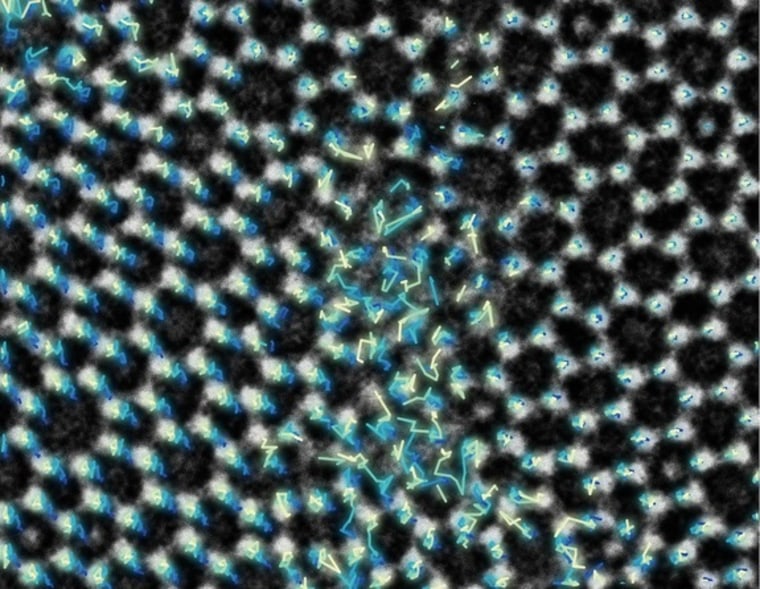Scientists have captured the wiggle of tiny molecules of the world's thinnest glass as they undergo strain.
The new images, described Oct. 10 in the journal Science, show that in small, localized regions, glass behaves like a crystal, with atoms aligned in an orderly matrix. But at long-length scales, its disorder dictates its flexibility. The new insights could help scientists understand how glass bends and breaks.
Humans have been using glass for thousands of years. Stone Age hunters used obsidian, a naturally occurring volcanic glass in cutting tools, and glass beads appeared in Mesopotamia more than 5,000 years ago. [In Photos: Treasures of Mesopatamia]
Yet despite so many centuries of use, scientists understand relatively little about how glass bends, breaks and moves at the atomic level. Glass is an amorphous solid, without a specific crystal structure, and it can be difficult to capture the motion of individual atoms in action.
To do so, the team shined a beam of electrons on the world's thinnest film of glass, nudging the molecules to move around. The microscope also captured the molecular rearrangements in real-time video.
The researchers also revealed the transition between glass's liquid phase and its amorphous or crystalline state as the material was placed under shear strain.
"The opening and closing of ring structures and the subsequent rearrangements can be directly observed. The results open new ground for modeling the atomic structure and dynamics in glass," Markus Heyde, a materials scientist at the Franz Haber Institute of of the Max Planck Society in Germany, wrote in an accompanying perspectives article in Science.
The advance may also have implications beyond glass, to other materials without defined, orderly structures. With the new imaging technique, researchers could also study how adding different materials into the glass could alter its structural properties, wrote Heyde, who was not involved in the study.
Follow Tia Ghose on Twitter and Google+. Follow LiveScience @livescience, Facebook & Google+. Original article on LiveScience.
